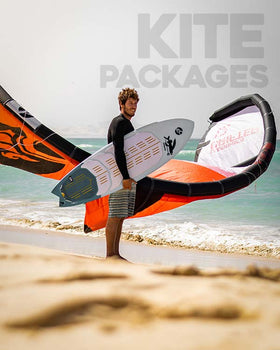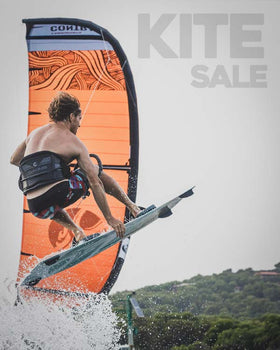
Understanding Kiteboarding Kite Designs | What kite is best for you?
Whether you are just getting into kiteboarding or looking to purchase your next kite, you may have encountered all the different styles of kite design and the disciplines they are geared toward. If you're having a hard time making sense of what they mean for you on the water. You are not alone.
Although all kites allow you to get out on the water and shred, it doesn't mean any one kite is worse than another. We want to share the logic behind each type of kite design and help you get the most out of your gear.
All-Around Kite


As the description said. This is the Swiss army knife of kiteboarding. All-around kites are the perfect kite that does it all. You can freestyle, big air, surf, and foil with an all-rounder. If you have to have one kite in your quiver, and you dabble in multiple disciplines, this is the category that will perform well across the board. Typically, a 3-strut design makes the kite relatively light and nimble, giving it a great wind range. The real downside of an all-around kite is that it is a master of none. Does everything well, but when you are looking for that little extra performance in a particular discipline, it doesn't shine that well compared to dedicated discipline design.
- Characteristics
- Typically 3-struts
- Mid-aspect ratio
- Pros
- Perfect kite for all types of discipline
- Good wind range
- Perfect progression kite for beginner to advanced rider
- Cons
- Not fantastic in any particular discipline
- Not fantastic in any particular discipline
Big Air Kites


The kites that are pushing the sport to new heights and that showcase the extremeness of this sport are the big air kites. Big air kites typically have a five-strut design, with a flatter profile and a higher aspect ratio. These features translate to more lift during your jump, which turns into higher jumps and longer hang time. The kite sits forward in the wind window, offering better upwind drive, and more vertical takeoffs. The downside of these kites is the weight and . With additional struts, the kite tends to be heavier and doesn't perform as well on the lower side of the operating wind range. These kites tend to have slightly slower steering and heavier bar pressure.
- Characteristics
- Typical 5-struts
- Higher aspect ratio
- Flatter shape with swept-back wing tips
- Strong vertical lift and strong upwind drive
- Pros
- More lift = Higher jumps and longer hang time
- Easy upwind ride
- More instant and direct power
- Cons
- Not as nimble or quick compared to the 3-struts
- requires more steering input
- heavier weight- lacking low-end performance
Surf Kites


- Characteristics
- 3-struts Kite
- Lower aspect ratio
- Sits deeper in the window
- more close shape - square wing tips
- Drift
- Pros
- Great depower and throw
- Quick and Snappy Turns
- The kite is great for wave riding
- Cons
- can back stall easily
- Smaller flying are = not as powerful and less lift
- Niche kite
Foil Kites (LEI)


Foil kites are super lightweight and minimalistic in design. It has similar characteristics to the surf-style kite, which are snappy turns and good drift, deeper position in the wind window, but foil-style kites excel at flying in light wind conditions. It can be a one-strut or a strutless kite. Since the kite is super minimalistic, there is not a lot of structure and the canopies are prone to bagging out when used beyond their intended top-end wind range. The foil kite generally is very niche, but one strut kite can be a great all-around freeride kite, and offer good performance for wave-riding.
- Characteristic
- 1 strut or strutless
- Low-Mid aspect ratio
- Lightweight
- Pros
- Good Depower
- Quick turning
- Drift
- Extremely stable in light winds
- Cons
- Not as powerful
- Relaunch can be tricky for a strutless kite
- Lack of structure cause the canopy to bag out faster
- The strutless kites are very niche kite
Freestyle/wakestyle Kite


C Kite is the grandfather kite in the industry—the shape of choice for competitive freestyle kiteboarders who are on tour. Flying a C-Kite is like driving a manual car: very direct feel and very responsive. One of the best characteristics of the C kite is that it generates a lot of slack in the bar during a pop jump, which allows the rider to pass the bar much easier for a wake style trick. C Kites is another niche kite most average riders wouldn't be riding. The kite has a smaller operating wind range and minimal depower compared to other shapes. This kite is dedicated to wakestyle and freestyle riding.
- Characteristics
- Generally 5-struts
- High aspect ratio
- Closed-C shape kite
- Often 5-line configuration
- Pros
- Direct feel
- Generates slack after pop for easy handle passes
- Perfect for freestyle and wakestyle tricks
- Cons
- Niche kite
- Not easy to relaunch
- Minimal depower
- Smaller wind range


